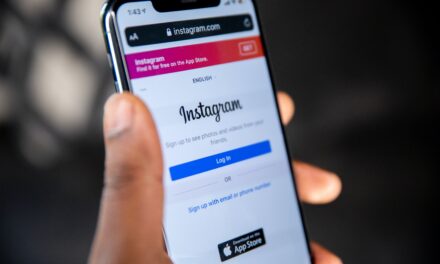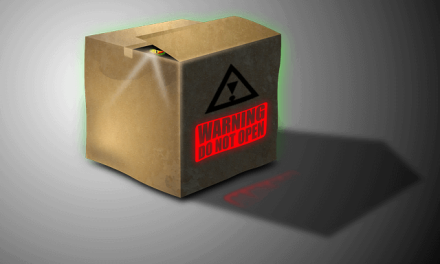Branding is showing people the values your business embraces. Sounds simple, right? Well, the basic idea of branding is simple when basic rules are followed, for example: If you fix cars, have a passion for fixing cars, and are doing the best job possible at a fair price, then that right there is the message you want to get out to people.
On the other hand, if you’re offering to sell customers the cheapest (of something), then your branding is based around value for money, a fair deal, and helping your audience’s shopping budget stretch further.
Branding tends to fail when a company does not know who they are or what values they stand for. Branding can become a real mess; or stock buzzwords like ‘dynamic’ and ‘blue-sky thinking’ tend to bulk out their brand message in place of anything with real substance.
A totally straightforward way of thinking about branding is this:
Branding is the way you want other people to think about you and your service.
Okay, we have a grasp of what branding is, so tell me, what does branding look like? Are you talking about the logo and colors used on the website?
Branding is everything you do in connection with your business; so promoting your brand comes in various formats. That means the colors you use, the words you write — think slogans — and the images you use. Let’s focus on slogans for a moment.
Take Nike for example, they use a slogan, which captures their brand message perfectly. The saying is, of course, “Just Do It.” Easy, right, just three words…
However, be warned, slogans are not easy to create. They look easy, heck, they even sound easy. But they’re not easy, far from it. For fun, here are 25 examples of slogans gone wrong.
Branding, as we said, is also color scheme, graphics, font, even the furniture that is chosen for the office, I’d go as far as to say the choice of computer the company uses adds to what the brand stands for… Branding is everything. Remember, branding is the way you want other people to think about you and your service.
Two examples of great branding are Gotch-SEO and Location Rebel. Gotch-SEO, as the title suggests, is a search engine optimization (SEO) training website for people who want to rank their own websites through to people who want to start SEO agencies.
The branding for Gotch-SEO begins when you see the elegant layout of the site, the simplicity, and then the language used. The branding tells you this is not a place for fans of the make a million dollars overnight content.
Next, we have Location Rebel. This site is geared around creating a lifestyle business, such as drop shipping. A recent article on the blog is how to become an SEO freelancer, so it ties in well with the Gotch-SEO example. Notice that the chap who runs Location Rebel brands himself living the lifestyle. And that’s powerful. Why?
Because that’s dramatic proof, which is the strongest kind of proof there is. Let me explain why.
Location Rebel says to new visitors: follow the lessons on my website and you, too, can travel and have an amazing life. I mean look at me, I’m a normal dude and I can do it… That means you can do it as well. If proof were offered at this stage, then proof would come in the form of, say, the surprisingly cheaper living costs on a tropical island. Proof sounds great, right? Well, dramatic proof sounds even better…
The author shows himself living on that tropical island. He’s not just talking about it; he’s living it for real. See how strong that kind of branding is? All that’s required now is to stay on message, which we shall look at next.
Ever had a conversation with another person who changes the subject every few seconds… Or a friend who bounces from one topic to another so fast that you never really know what his last comment was in relation to? Confusing, right? That’s why staying on brand is vital. Another way to say that is, keep on communicating about the service or offer you have that makes you amazing. Let’s dig deeper into how to achieve that.
The Power Of The Brand Message
What does Nike sell?
You will likely realize the answer is not just sneakers.
Nike is selling the vision of a lifestyle that people believe they want. Sneaker sales are a side effect.
Nike’s branding comes in the form of emotional branding by committing to help people become the best they can be. This technique uses archetypes in its advertising – more specifically, the story of the Hero. And because of this branding, their customer loyalty is crazy high.
Next time you watch a Nike advertisement, concentrate on how it makes you feel, that’s the best way to understand emotional branding.
Okay, but what if you’re not Nike, how do you ‘brand’ an affiliate site?
The first step is to stop and change the way you think about what your site offers people. You know your site is there to help people. Any sales you make are a side effect of the help you offer. If you help enough people, high sales numbers will follow.
How do you give that help? You point people towards the product you’re recommending. You use the marketing around that product to intrigue and entertain the prospect. And if they feel they can trust you, then there’s a higher chance of them clicking through and watching the video sales letter… And how do you get people to trust you…
Start by becoming clear on what your brand message is. That means the values you stand for are the same as those of your customer, like integrity. In any transaction nobody wants to lose face. The chef wants the customer to enjoy the meal, as much as the customer wants the food to taste delicious. For affiliates, that means picking products that deliver value. You want to make sure the product you’re telling people to check out is going to help solve a problem for them. And your customer wants to trust you to help them find the information that is going to be the tonic to their problem.
Remember, the job of an affiliate is not to solve the customer’s problem, but pass people on to a product or service that does solve the problem. And how do you do that…
First with branding, then winning the reader’s trust, then with a recommendation, let me give you a concrete example. To do this, I’m going to make a number of assumptions…
You’re on a website right now called Insider Affiliate. You want to increase your sales as an affiliate. And specifically, you’re reading an article on branding your business to help you achieve that.
Okay, why are you reading this article on this website? Is it because you’ve read other articles on the site, so you know how we do business? If that is the case, then the branding we’ve used has influenced you to read. You know that if you read one of our articles, we don’t work up to a climax that includes a call to action to a paid service. Nope, we don’t do that. What we aim to do is give you enough information to help you take action to improve your sales. And if you’re an affiliate for one of our information products (Beirresistible, Bar Bros, Your Brilliance, Real Beauty Breakthrough) and you start making more sales, then it’s a win-win situation. We’re building a relationship with our readers; we want our readers to trust us. Then, if we do suggest using a certain piece of software, there is a much higher chance of readers purchasing something that will help their business. Any sales we make are a side effect of helping you.
If you want to do the same, then I’d suggest researching and reading your competitor’s websites, that’s what we did and that’s why we chose to stay away from hammering our readers with paid offers.
Remember that branding is every contact you have with your customers. Branding is how you want your customer to think about you. So, why not gather a selection of your competitor’s websites and see what their brand message is. What can you learn from them? And from that, start to shape your own brand message.





INTERESTING READ. THE ADVERTISEMENTS GONE WRONG WERE HILARIOUS.